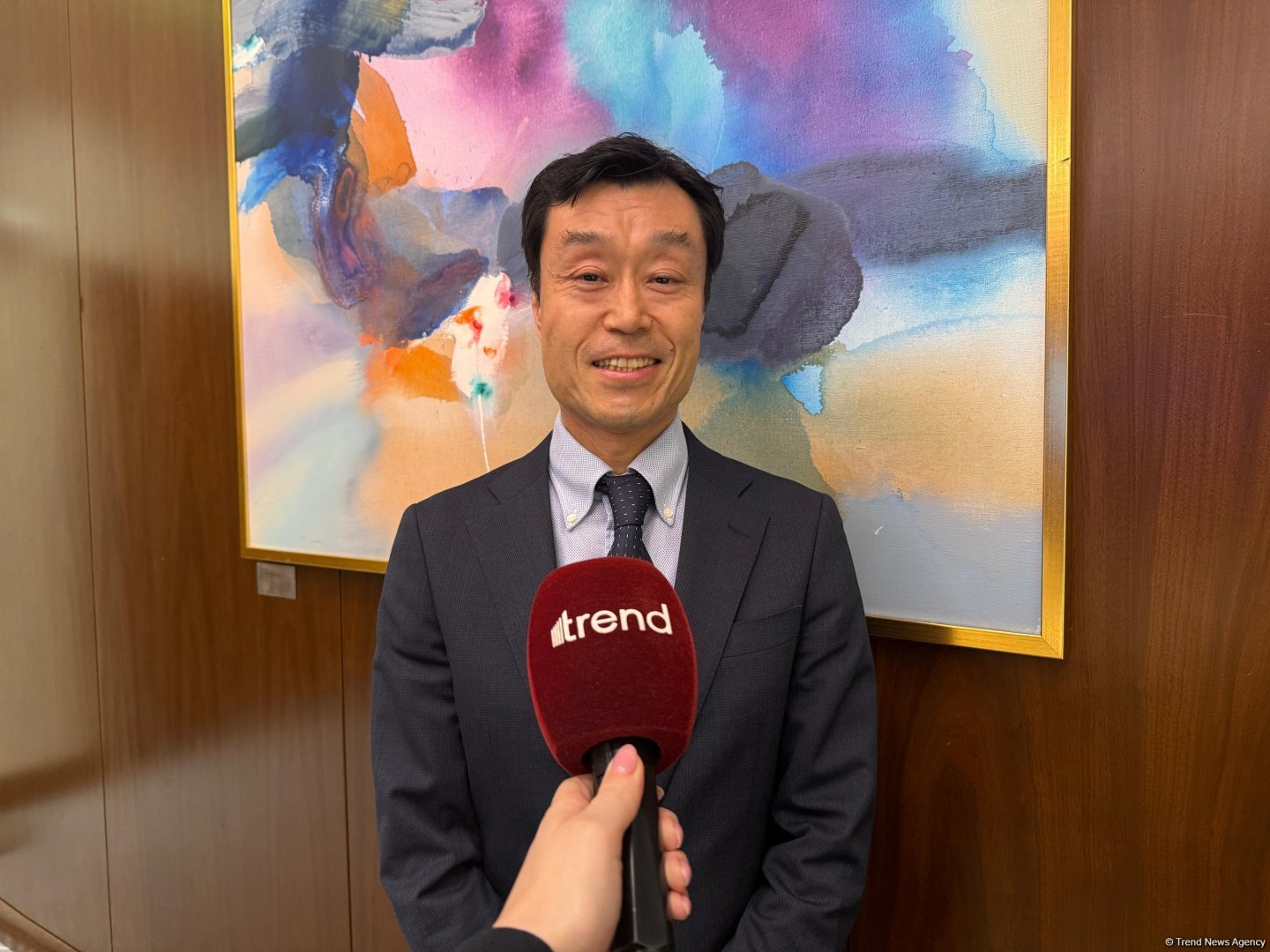BAKU, Azerbaijan, October 20. The Asian Development Bank (ADB) has received a request from Azerbaijan to support seven projects in water sector, Norio Saito, Director of the Urban Development and Water Division (SAUW) at the South Asia Department (SARD) of the Asian Development Bank (ADB), said in an exclusive interview with Trend, as he visited Baku.
“I had very good discussions with the ministries of finance, economy, and Azerbaijan State Water Resources Agency. We received a request to support seven projects. This is to strengthen or improve water efficiency, such as rehabilitating existing water treatment plants or refurbishing the existing water transmission pipeline to improve the efficiency of the systems,” he said.
Saito recalled that two months ago, the ADB team did a quick field study, and assessed the urgency of those projects.
“I think all seven projects are found really necessary and urgent. Now we are waiting for the final guidance coming from the government, where the government wants those seven projects to be supported by ADB. I think they approached other development partners as well. Now they are considering which part of these seven projects needs support from ADB. Once we receive that clear signal, our team will do more diagnostics to identify the needs, maybe update some cost estimate, and agree on a roadmap on how those improvements can take place,” he explained.
Saito also talked about three main aspects of possible support to Azerbaijan in this sphere.
“The first point is efficiency. This is an issue in the South Asia, but as I understand, this is also an issue in Azerbaijan as well. Improving the water supply system will strengthen resilience, because small amount of water can cater to the current needs. The second aspect is inclusivity. In South Asia, or in other parts of Asia, where ADB operates, we provide connections to household level for both water supply and sanitation so that everyone can benefit from the system. This is very important when we talk about public health. If some people's public health does not improve, that will affect even other citizens. We want to make sure that inclusively safely managed water supply and sanitation services are given to the citizens,” he added.
Saito noted that the third aspect is about resilience.
“So many cities in the world are now suffering from floods, for example. But actually, rainwater or stormwater is an important water resource. In other countries we support groundwater recharge so that rainwater can be recharged or stored in the groundwater or some retention ponds so that rainwater can be stored, and then when the rainwater becomes necessary, that can be used. These are some of the lessons that can be applicable to Azerbaijan as well,” he added.
Partnerships with governments and local stakeholders to ensure resilient urban development
Saito pointed out that in the public sector operations, ADB’s main counterpart is the national government.
“But many of the urban infrastructure, the local governments or local authorities, municipalities need to play a key role. They can be executing agency or they can be implementing agency. From the planning stage, we invoke the local authorities so that they can be the driver to implement the project. Some projects in countries are implemented by national level ministries, but still assets are often handed over to local authorities or local governments. In that case, it's important to really strengthen the capacity of the local governments so that they can provide sustainable services to the citizens over a long time.
Another aspect is the stakeholder engagement. It's not just about local governments, but the people. ADB has this local stakeholder engagement processes from the project preparation stage so that people are informed about the project and then people can have a say about how the project should be designed and implemented. That's incorporated into the project design,” he explained.
Key strategies to help cities manage water resources sustainably
“We need to look at the water resource holistically from source to sea, where the water is coming from, how the water is used, and then how the water is disposed or treated safely. Often, like in many countries, 80% or more water is actually used for agricultural purposes. And this part is often inefficient. Addressing this part to make the agricultural system, the irrigation system more efficient, is really critical.
We look at the water use efficiency in the city level. So non-revenue water reduction also plays an important role. And then how the water is utilized, whether it's utilized efficiently, effectively, that's another important aspect,” said Saito.
He pointed out that the last aspect is water treatment: “Water is used and then wastewater needs to be treated. But when the water resources become more and more scarce, it's important to consider how to utilize treated used water or wastewater for industrial, agricultural purposes, or even for drinking purpose.”
Integrating climate adaptation into urban development projects
Saito noted that ADB conducts upstream climate risk and vulnerability assessment in the very upstream of the project preparation.
“This assessment will identify where the vulnerability is and how this vulnerability can be addressed. It may be a drainage system, it may be some other reasons that cause vulnerability. Then project design really incorporates those aspects so that project as a whole, as a system, city as a system, can really strengthen resilience,” he explained.







